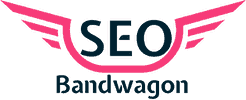
Our most recent client, who represents the author, had a bit of a puzzler for us last week. They wanted to increase traffic to his book site for the release of a new paperback edition of Boom, Bust, Boom by Bill Carter.
This is a good example of how a branded keyword can be competitive. When we started to evaluate the competition for the book title it was a lot of big hitters: Amazon, Daily Beast, Barnes & Noble, Kirkus Reviews, Wall Street Journal. These domains have huge numbers of backlinks to their domain but not to the individual pages.
The name of the book is essentially the brand and the product, and there is a lot of product competition. But why shouldn’t you rank for your branded keywords?
It went even faster than we expected.
Over the last weekend the site went from second page on Google to #4 overall. And we are #1 on Bing after not being found anywhere last week. These are some of the more fundamental practices we implemented that may have made a big difference:
- Fixed Canonical non-www with 301 Redirect
The story goes that Google can treat this like duplicate page content, which is a penalty, but not a big one. We used a 301 redirect in .htaccess to forward all traffic to the www version of the site. The ModX CMS required a little tweaking to the standard code but it was easily found with a quick search. - Replaced “Home” with “Boom, Bust, Boom” in Navigation
This one always baffles people because they are so used to seeing a “Home” button on every website. The important part is, “on every website.” It’s not distinct or descriptive. Replacing it with the title of the site is and it probably had the single largest effect of the low hanging fruit. That and cleaning out some of the navigation items. It should probably continue to be pared down. Simple navigation means fewer options, not more, and you will perform better in search with those more relevant options. - Renamed Blog Directory
The directory name was way too long, /blog-news-and-updates-from-author-and-filmmaker-bill-carter/ now it’s just plain ol’ /news/. URLs are better if they are short and contain focused keywords. There is a tendency to overdo it with SEO. Just one more only works with cars and guitars, not with words. Don’t forget to redirect the old directory to the new.
So today we did a couple of more basic steps today:
- Optimize Images
Redid file names with dashes instead of spaces, added appropriate alt tags for accessibility and keywords. Resized a couple of images that were using style properties for image size (slow) and used Smush.it to compress them further. Google tracks page load times, so should you. Mostly because they are so important to user experience and nothing kills conversion like a slow website. - Create XML Sitemap
Ran the site through a crawler, uploaded the XML file, and submitted to Google and Bing Webmaster Tools. Sites really should have an HTML Sitemap that you link from the footer to make sure all of your content gets indexed, it would make a good follow up if we don’t get any more improvement. The sitemap had 106 pages compared to 50 indexed by Google.
This isn’t everything that we did. Just the most basic obvious stuff that everyone ought to know about. Implementing Google Authorship, schema markup, improving some other aspects of page load, and possibly some A/B testing are next on the list, but you can see that just doing some of the basics can have some big payoffs.
As a final thought, there are always surprising keywords that your content will rank for unexpectedly. That’s the other upside of optimizing your site structure, it strengthens all of your site content. Thank you to ModX Master Chen Pollina who couldn’t have been more helpful and responsive.




